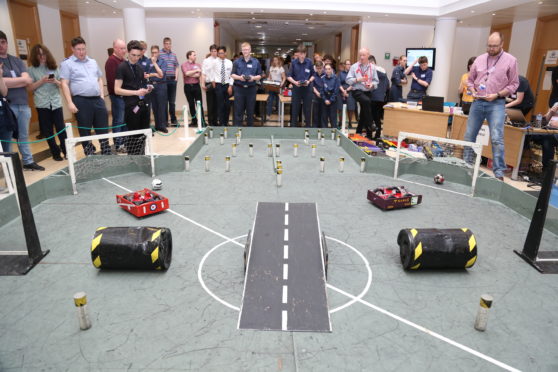Dozens of students from across Scotland – including the Highlands and the Western Isles – gathered in Edinburgh to compete in the Leonardo’s Scottish Robotic Games.
Pupils from Alness Academy and Sgoil Lionacleit battled counterparts from around the nation to construct radio-controlled robots from repurposed cordless electric drills, paired with two electronic motor controllers.
The students were guided through the construction and operation of their powerful featherweight sporting robots, before competing in a range of challenges from a robot assault course to two-a-side football.
Students from Alness Academy took their hand-built robots Roy and Tomoe.
Student Dominika Kabukowska said: “It has given me experience of engineering and what I could possibly do in the future.
“Actually I didn’t realise it was going to be so much fun, I thought it was going to be a normal competition where you win or lose then you go home.
“I’ve learned how to use soldering, circuits, and about building robots using woodwork.”
The robotic games were the brainchild of Peter Bennett as a way of providing an easy introduction into the world of engineering, as well as encouraging more people to take part in science, technology, engineering and maths.
